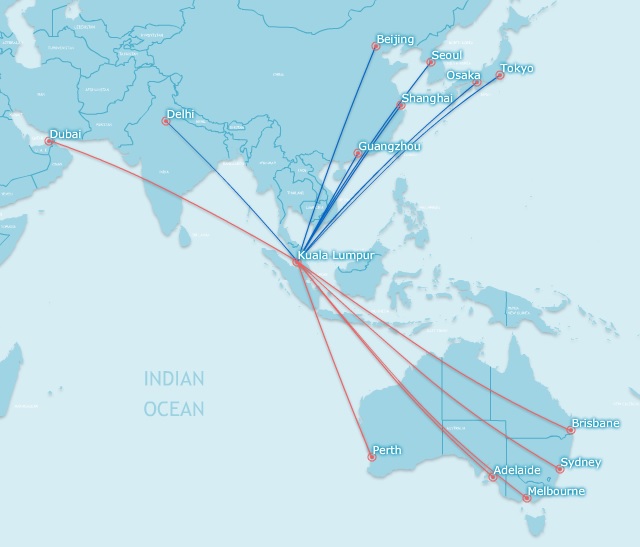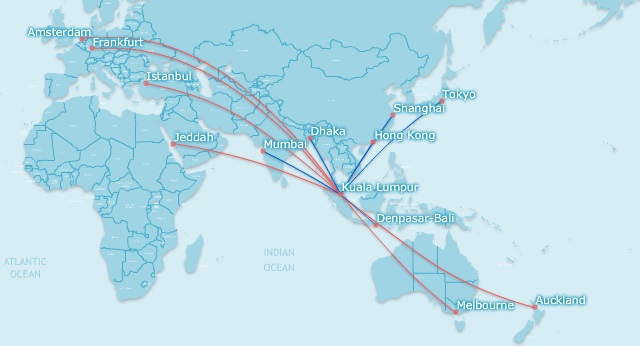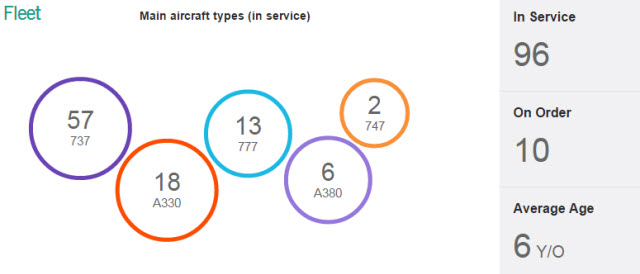One day before new Malaysian Airlines (MAS) chief executive Christoph Mueller assumed one of the toughest jobs in aviation, the ailing carrier gave a major hint that the winds of change are gusting.
Although news flow from MAS has been quiet in recent months, on 30 April the carrier quietly disclosed that it is looking at a major paring down of its widebody fleet. While not entirely surprising given state investment fund Khazanah Nasional's determination to restructure the carrier, it marks an important step toward the carrier's future.
An official told Flightglobal that the airline is marketing some of its Boeing 777-200ERs and Airbus A330-200 Freighters to potential purchasers. Other reports indicated that it could sell or lease out its six Airbus A380s, although this is not confirmed.
The official said the airline intends to "approach the market to dispose of some assets," but would not be drawn on which types would be sold.
Ascend Fleets database shows that in terms of widebodies, MAS also operates 16 A330s, 13 777-200ERs and three in-storage 747-400s. It also has two 747Fs. The only aircraft it has on order are 10 737-800s.
FlightMaps Analytics shows MAS’ international services are equally shared between the A330s and 777s.
The former type is mainly deployed to Australian destinations, major cities in eastern China, as well as Korea (Seoul) and Japan (Osaka, Tokyo).
MAS A330 route destinations – April 2015

FlightMaps Analytics
Its 777-200ERs, meanwhile, operate some similar routes as the A330s: Tokyo, Shanghai and Melbourne, but are also deployed to Europe (Amsterdam, Frankfurt, Instanbul) and Middle East (Jeddah) and the Indian subcontinent (Mumbai, Dhaka).
MAS 777 route destinations – April 2015

FlightMaps Analytics
FlightMaps shows that that MAS uses its A380s on the London and Paris routes.
Ascend analyst Dennis Lau believes that should MAS dispose of its A380s, frequencies to the two European cities will likely be cut.
Lau says MAS’s 777-200ERs have the range to fly such distances, although they could face capacity restrictions, and that such a move is consistent with Khazanah Nasional’s plans should the carrier decide to maintain a presence in Europe.
The Malaysian sovereign fund has said that MAS will build on its Kuala Lumpur hub connectivity by increasing domestic and ASEAN route capacity by 6 to 8% yearly, along with a 5% capacity growth on Asia Pacific services.
Meanwhile, Mohshin Aziz, an analyst with Maybank Investment Bank, says that MAS’s disposing of widebody aircraft “is in sync with their actions so far” of cutting routes and manpower.
MAS Fleet as of 4 May, 2015

Flightglobal Dashboard
He says previous route cuts “have left a lot of excess aircraft”, and the natural choice is returning them to lessors or selling them.
Aziz says he favours the latter option, describing it as a “simpler proposition”, as “working with lessors involves a lot more complicated steps” - not something MAS can afford at this time.
On finding a buyer for its A380s, he believes it will be an "super difficult task" as there is no secondary market for the type.
“Airlines who want A380s do not have to wait long for Airbus given the available slots in Toulouse. Moreover, they (MAS’ A380s) are not suitable for sale. They haven’t done their C6-checks or undergone their first engine overhauls.”
Aziz believes that besides a focus on domestic and regional routes, MAS can “afford to have a touch of international services to China, Australia and India.” But he also expects the carrier to cut even more routes to Europe in the near future.
But all is not doom and gloom for MAS, thanks to its strong links among its Oneworld alliance partners.
Aziz suggests two “anchor partners” that MAS could leverage on. These are British Airways for future re-entry into Europe, and Cathay Pacific for greater Asia and the United States.
“Both these carriers have had positive history of working with MAS, but more importantly, MAS provides them with a regional depth within Southeast Asia and a potential alternative market away from Singapore.”
Source: Cirium Dashboard



















